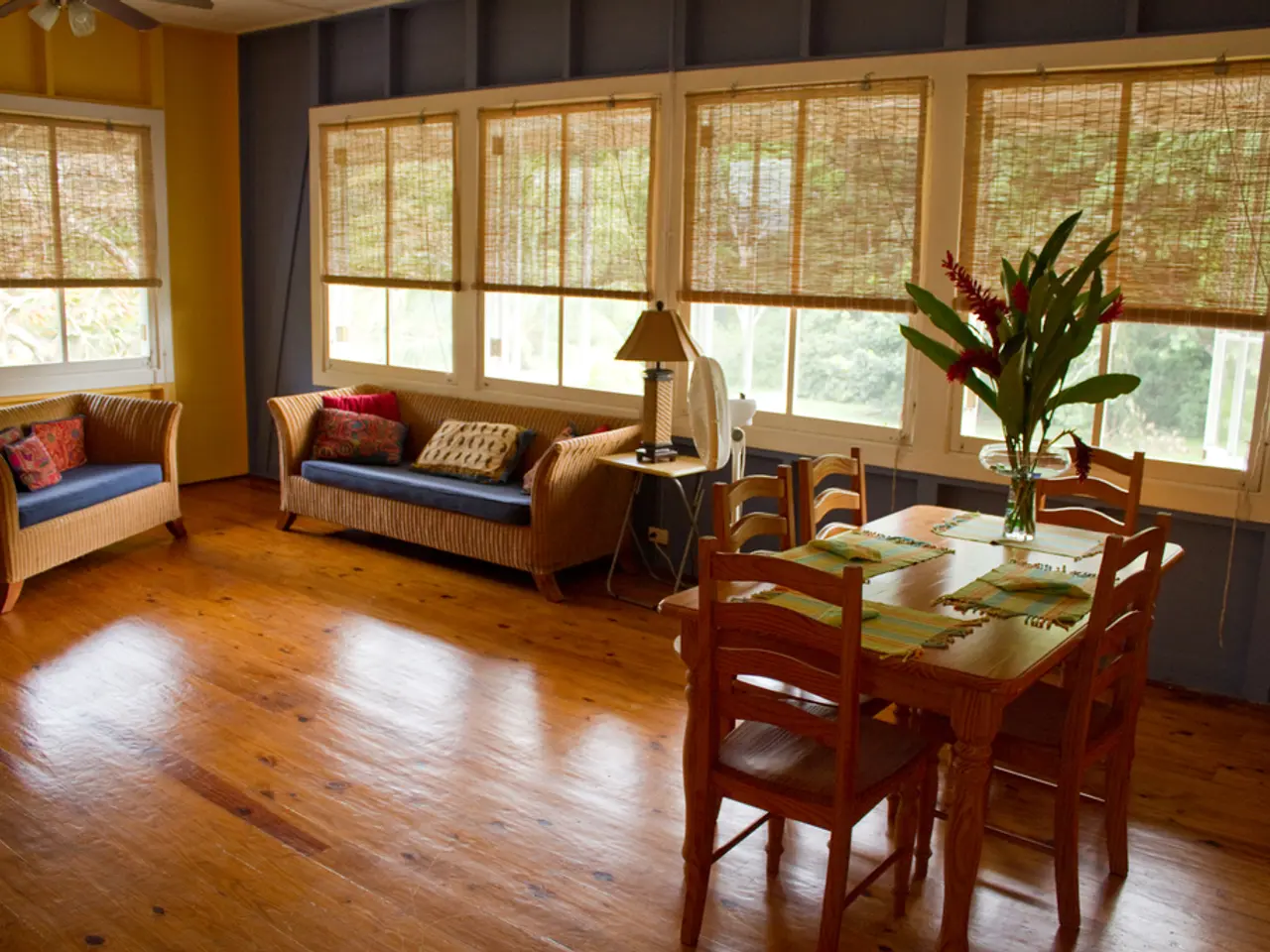Revolutionizing Spaces through Artificial Intelligence
In the world of interior design, exciting developments are on the horizon as human creativity and artificial intelligence (AI) continue to converge. This collaboration promises to open up unprecedented access to professional-quality design tools and inspiration for homeowners.
AI is transforming the industry by streamlining complex visuals, broadening creative possibilities, and bridging the gap from concept to construction. One of the key ways AI achieves this is through rapid idea generation and visualization. AI-powered design generators can create multiple visual concepts from simple prompts, allowing users to explore various styles and layouts quickly.
For instance, Planner 5D's AI Interior Design Generator produces visual concepts and floor plans from images or inputs, which can then be fine-tuned in a 3D editor to adjust layouts, materials, lighting, and technical drawings. Another example is RoomGPT, a tool that enables homeowners to upload photos and receive AI-generated redesigns.
Precise 3D modeling and spatial planning are another area where AI shines. Tools can recognize room photos or sketches and automatically convert them into accurate 3D floor plans, enabling realistic walk-throughs and testing of spatial relationships. Planner 5D offers AI-based floor plan recognition and augmented reality simulations for immersive design reviews.
AI also plays a crucial role in smart furniture and decor recommendations. AI algorithms suggest furniture and decor replacements that maintain the room’s style, balance, and flow, facilitating personalized yet consistent design adjustments without manual searching or trial and error. Foyr’s AI interior design software allows easy swapping with automatic spatial adjustments.
Design optimization and error reduction are other significant benefits of AI. It improves materials, textures, and lighting automatically to create polished, professional-looking interiors. Three-dimensional Home’s AI model, for example, generates whole-house designs and localizes part selections tailored to regions, optimizing customization and feasibility.
The future of AI in interior design will see the integration of virtual and augmented reality technologies, smart home integration, and machine learning algorithms that understand individual preferences over time. However, privacy and data security are concerns with AI tools, as they often require detailed information about users' homes and preferences to function effectively.
Embracing AI as a collaborative tool while maintaining human creativity, intuition, and personal connection is the most successful approach in the future of interior design. The most successful AI-assisted designers use AI as a starting point and layer personal insight and customization onto AI-generated foundations.
AI tools are revolutionizing interior design by enabling rapid concept generation, precise 3D modeling, personalized design recommendations, and seamless transitions from inspiration to implementation for both professionals and homeowners. These tools enhance creativity, efficiency, and accuracy throughout the entire design process.
Platforms like Roomvo and Modsy allow users to visualize and experiment with different paint colors, furniture arrangements, and decor options using augmented reality and 3D renderings. Virtual staging has become popular in real estate for furnishing empty properties with stylish decor that appeals to potential buyers.
AI may predict how design choices will affect mood, productivity, or well-being based on psychological research and biometric data. However, it struggles with highly personal or emotional aspects of design, such as understanding family dynamics, personal memories, and subtle ways individuals interact with their spaces.
The market for AI interior design tools has seen significant growth in recent years. Style transfer tools can take inspiration from one room and apply its aesthetic principles to an entirely different space. For professional designers, AI provides powerful new capabilities while freeing up time for the uniquely human aspects of design.
In conclusion, AI tools are streamlining and enriching interior design by automating complex visuals, broadening creative possibilities, and bridging the gap from concept through construction, benefiting both professionals seeking efficiency and homeowners exploring ideas independently. As we continue to explore the possibilities of this exciting collaboration, the future of interior design promises to be a thoughtful integration of both human and artificial intelligence.
[1] Planner 5D. (n.d.). AI Interior Design Generator. Retrieved from https://www.planner5d.com/ai-design
[2] Foyr Neo. (n.d.). AI Interior Design Software. Retrieved from https://www.foyr.com/neo
[3] Planner 5D. (n.d.). Augmented Reality. Retrieved from https://www.planner5d.com/ar
[4] Three-dimensional Home. (n.d.). AI Design. Retrieved from https://www.3dh.ai/
[5] Paintit.ai. (n.d.). Shoppable 3D Renders. Retrieved from https://paintit.ai/
- The AI Interior Design Generator from Planner 5D, as well as RoomGPT, are exemplary tools that harness AI to create multiple visual concepts from simple prompts, enabling users to swiftly explore various styles and layouts.
- In the realm of smart furniture and decor recommendations, AI algorithms lend a helping hand by suggesting replacements that maintain a room’s style, balance, and flow, facilitating personalized yet consistent design adjustments without manual searching or trial and error, such as Foyr’s AI interior design software.




